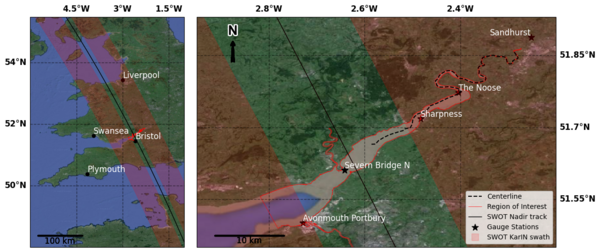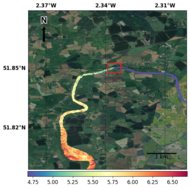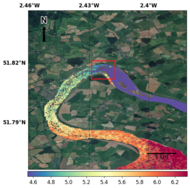A tidal bore visible in Swot data
Image of the Month - February 2025
When tide is rising close to a river mouth, the ocean water can get within the estuary and up the river. When the tide amplitude is high, it can create a wave, the tidal bore, which will then travel upstream - sometimes quite far, and sometimes high enough, and lasting long enough to be surfed.
The Severn estuary (Bristol Channel) in United Kingdom is among the places where a significant tidal bore can be observed, with a tidal amplitude up to 12 m. It was also one of the study site for Swot Calval, and under the 1-day Calval track, enabling to measure daily sea surface height in the estuary, increasing the likelyhood of measuring at a moment when the tidal bore was present.
Timetables of tidal bores exist for the Severn estuary (and for other such places). Using those, DTU manages to pinpoint several occurences of a tidal bore in April 2023 while Swot was overflying the area, and then to process and plot the high-resolution data within the estuary, showing the front of the advancing tidal bore on different days.
Estuaries and deltas, at the interface between ocean and inland waters, are among the areas which knowledge should benefit the most from Swot. The results already shown by the first outputs by the scientific teams involved in the mission continues to open perspectives

See also:
- Missions: Swot
- Applications: Coastal ocean
- Applications: Ocean tides
- Data are available through hydroweb.next
References:
- Arildsen R., Andersen O., The Severn estuary tidal bore from fast sampled Swot data, 30 Years of Progress in Radar Altimetry Symposium, Montpellier (France), 2-7 September 2024
- Arildsen, R.L., Andersen, O.B., Nilsson, B. et al. Tidal bore revealed by SWOT: a case study from the Severn river. Sci Rep 15, 22776 (2025). https://doi.org/10.1038/s41598-025-99597-2




















